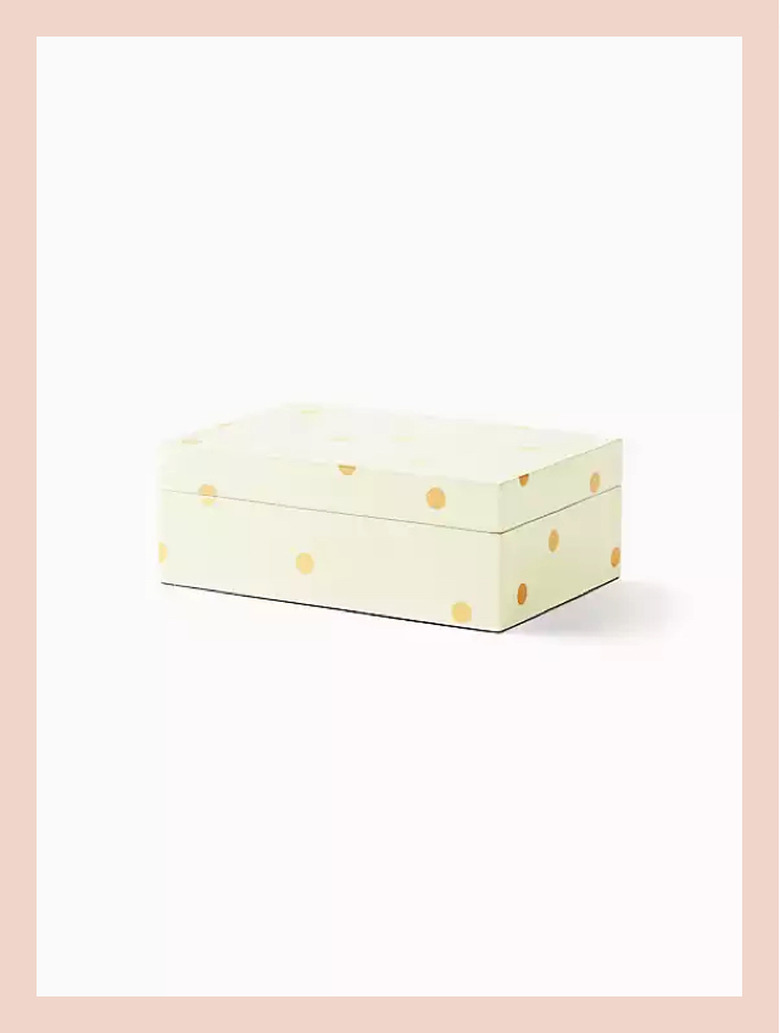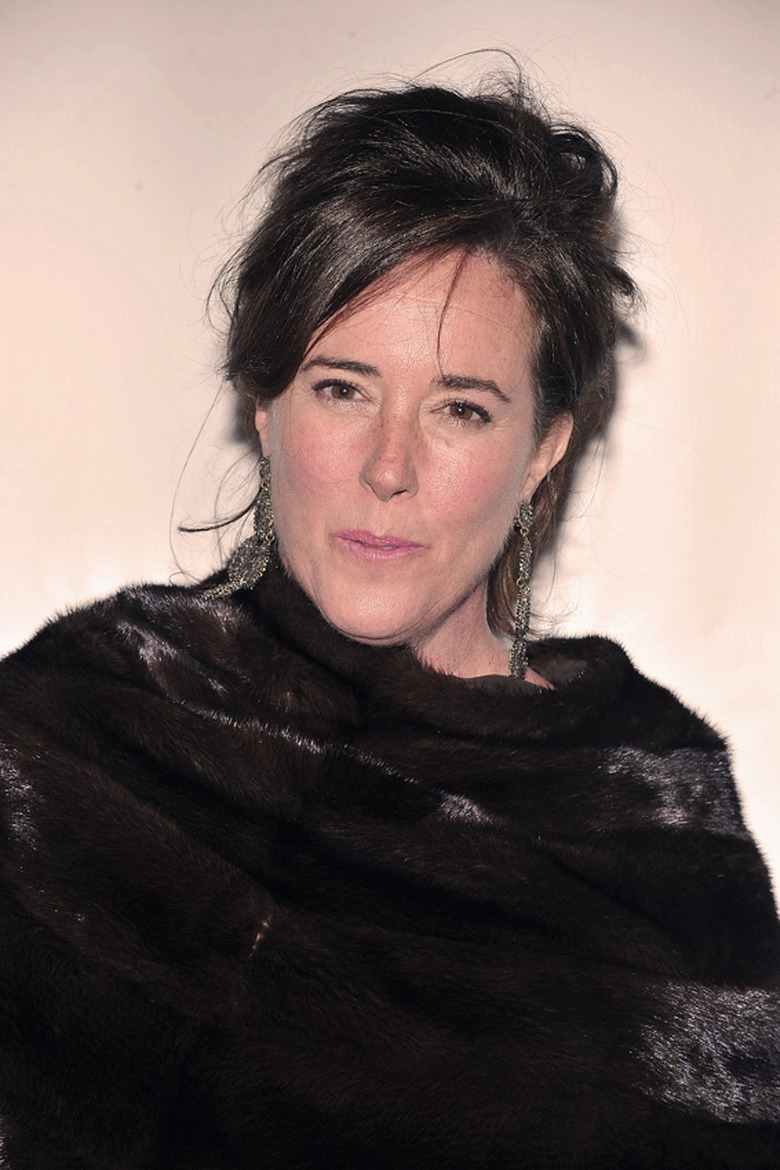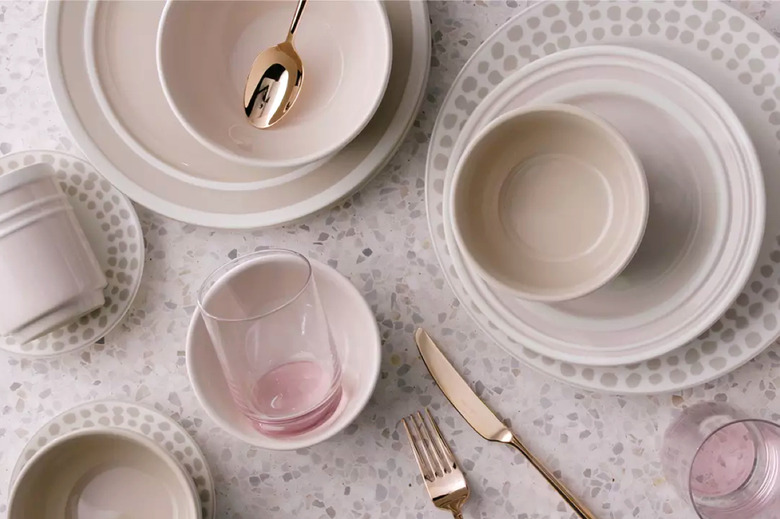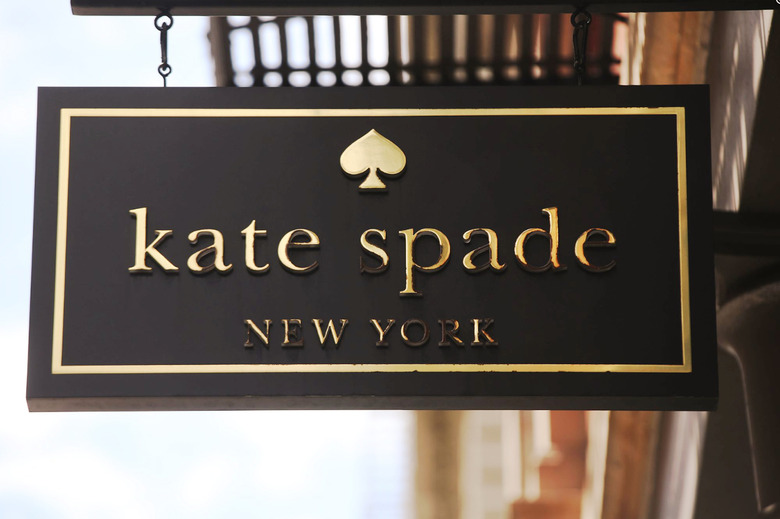Kate Spade Made Growing Up Seem Not So Bad
For a certain generation, adulthood seemed to begin only after becoming aware of Kate Spade.
Spade was best known for her iconic line of handbags, launched in 1993. The nylon bags were achievable status symbols, and emblematic of a certain '90s/early 2000s aesthetic that was chic, simple, and slightly preppy. But over the years, her aesthetic evolved to a place of cheer, and the bright colors, clean lines, and monograms that characterized her style worked their way into a whole universe of products, including home decor, bedding, dishware, and stationery.
She leaves behind a creative legacy that changed the way people relate to fashion and their homes. Which might be why her sudden death feels different to many women who, like me, only knew her through magazine profiles. New York Times reporter Katie Rosman hit it right on the head when she tweeted, "I feel sad about Kate Spade's death in a way I rarely do when a celebrity dies. It feels personal."
And for me, too. It is personal. When I start to look around my home, I realize how far-reaching my relationship with Kate Spade is.
There are two purses hanging on the wall. Drinking glasses covered in peony and gold polka dots in the cupboard. Gold and turquoise coasters on the coffee table. A lipstick in my makeup bag. The Twirl perfume on my dresser. One of her books on my shelf. A bathrobe hanging on my bedroom door. Two chipped-but-still-cute iPhone cases that I couldn't bear to throw away before, and now I certainly won't. Every one of these products puts a smile on my face when I use them.
And that's such a huge part of it. Spade's preppy-but-playful style — one that largely seems to have made Pinterest a possibility — was pure and simple fun.
At least, on the surface.
But there was something larger: Her wares had an intangible magic that created an emotional resonance in the arc of women's lives. Getting your first Kate Spade — whether it was a handbag, a notebook, or a set of china — was a milestone, and one we revisited again and again. There was something about Kate Spade that made you feel like a grown-up. Professional. And through her products, she could take the responsibilities of adulthood — say, writing thank you notes, or buying throw pillows for a couch — and make them fun, as if they came with an added wink. Innocent symbols like polka dots and bows hinted at something more sophisticated, a playfulness that felt like dress-up in the best possible way. These items said something about who you were and where you were going, signifiers of a womanhood that still embraced youth.
If you loved Kate Spade, you know how much one of her pieces could feel like a rite of passage, especially when you made the purchase yourself. I still remember the pride I felt at age 28 — a time when spending $300 (or more) of disposable income on a single item felt like relinquishing a limb — when I bought my first leather handbag from Kate Spade. Even snapped up on sale, it is still the most expensive purse I own to this day.
With her death comes a reminder that some objects aren't just things — they're memories, principles, and subtle guides to how we act and live. So those polka dot drinking glasses remind me of the way I tried to zhush up cocktails in my twenties. I use the coasters to keep from ruining an Ikea table that's brought me through multiple homes. I've kissed men while wearing the lipstick. I wear the white bathrobe before I join my husband in bed.
My heart is broken for Spade's family, friends, and colleagues. And it is broken for her, too, for how much pain she must have been in for so long in order to take her own life. But Spade's legacy will live on in our closets and in our homes — and I can only hope that it will continue to do so for generations to come.



